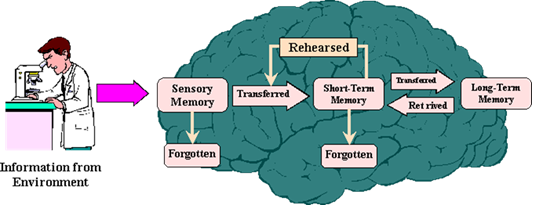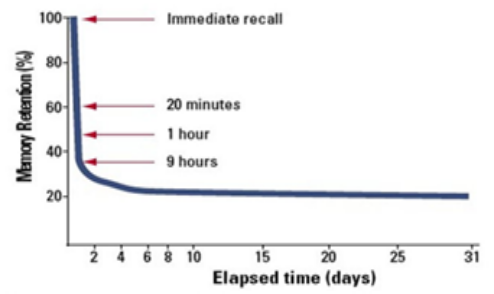- Latest NewsUp-to-date articles giving you information on best practice and policy changes.
- Skills AuditsEvaluate your skills and knowledge, identify gaps and determine training needs.
A practical guide to teaching children with dyslexia
Since dyslexia manifests differently from person to person, a 'one size fits all' approach isn't appropriate. Liz Murray provides a variety of practical classroom strategies to support pupils with dyslexic profiles
In my previous article, I explain the problems with a generalist approach to dyslexia diagnosis and intervention.
This subsequent article focuses on specific strategies for class teachers. Although some are general strategies that will work for all, most need to be mindfully used with intent to meet a specific need within a dyslexic profile.
The power of a personalised approach
My daughter had a teacher in Year 2 who really understood the power of simple but targeted routines.
Each child would busily get on with a purposeful activity that was appropriate for them. This was not a ‘sit down and read in silence until I am ready for you’ start to the day, but a highly personalised approach that worked for all children.
So, how did this teacher achieve this every single morning?
- A clean, uncluttered environment, which showcased achievements but never became too busy or over-stimulating.
- Calm music playing as the children entered, which ceased after the first 10 minutes of the day and signalled that the first lesson was to start.
- Each child had a purposeful task to start the day; some were encouraged to read or draw, some would have an active job such as handing out or organising equipment. This was a routine which suited each individual and their needs.
- The focus of the first lesson was always on the interactive white board (IWB) and some children took time to sit and look at this and gently ease into the classroom environment before learning began.
Inclusive teaching strategies for every lesson
As well as creating a routinely calm classroom environment, there are some strategies that will be as helpful to children with weak auditory memory as they are to children with poor word reading fluency.
- A visual timetable for the lesson; this could be handwritten bullet points on a whiteboard that the teacher or TA ticks off as the lesson progresses.
- Repeated visuals, on the IWB or handouts, to support key vocabulary or concepts.
- Simple clear boards – better to have more slides with less text on a muted (not white) IWB background than lots of text on fewer slides.
- Deliberate use of oral language; say what you mean to say. Repeat instructions using exactly the same words; this is effective for children with auditory processing or any receptive language needs.
- Colour coding to emphasise key words or patterns in text – in an English lesson all nouns might be purple and verbs might be blue, for example. Do it consistently and ideally as a policy across the school or department.
- A ‘minimal copying out’ culture; copying out lots of text is time consuming and adds little benefit but is stressful for the dyslexic learner. Keep learning objectives short and to the point or use a few key words instead to indicate the topic.
Word reading and fluency
If a child describes ‘words moving or dancing’ we know that this is a sign of visual stress and that isolating text or using a coloured reading ruler can be helpful. A specialist optometrist may be able to prescribe tinted glasses that can be worn for all reading activities. It is important to consider the age of the child and any interventions tried before.
- Give shorter sections of text and try a coloured reading ruler or ‘window’ to isolate text.
- Provide auditory input also, read aloud as a class, do targeted paired reading, use an audio version of the text.
- Support key points or key words with repeated visual support.
Dyslexic children can become very negatively impacted by a lack of self-belief
Spelling
In primary school, a phonics approach is often effective, but if this has been trialled and hasn’t worked there are a range of methods that can be tried (both within the mainstream classroom and in small group interventions).
- A neuro-linguistic programming (NLP) approach is a visual strategy for learning, storing and accessing spellings and can be very effective, especially for secondary age children. Magic Spelling has a range of useful resources.
- Look, say, cover, write, check is used in many schools but must be used properly. For example, don’t just look at the word but interrogate it! Notice patterns, repeat it aloud, close your eyes and see what you can remember. Discuss what you notice before moving on to the next stage.
Supporting working memory
The Rose Review (2008) identified that having a poor verbal memory was a characteristic feature of dyslexia, but what does this mean in practice?
A multi-sensory approach helps information to push through into our long-term working memory, but what about the child who has a weak short-term memory and poor auditory memory?
Using visuals regularly makes sense, but what else can a classroom teacher do to support retention of information?
- Verbal rehearsal: language teachers are brilliant at using this and it can be an excellent strategy across the curriculum. As a whole class, look at a key word, say it aloud, visualise the word, explain its meaning to someone else, then repeat.
- Give clear and correct information the first time when you are explaining a concept. Repeat using the same words and support with visuals.
- Use strategies based on patterns, for example teach spelling patterns, or colour code text as above. When teaching spelling, always emphasise and talk about the meaning of the root word.
- Reduce the memory load by chunking information, don’t move on until they have grasped the first chunk.
- Ensure that new knowledge is ‘tethered’ to something previously learned before.
- Take into account the ‘forgetting curve’. We know that the middle section of a string of information can be lost more easily. Present information in small chunks and repeat.
Using language to enable visualisation
Many of us automatically visualise a picture in our minds when we hear or see a certain word; this helps us to remember it. Some children with auditory processing or visual tracking difficulties don’t do this intuitively because the words get stuck.
Once a child has visualised a clear image themselves, this can help them to remember it long term, especially when prompted by hearing the words again. It can be helpful to show key words, repeat them and ask the child what the words make them visualise. Try phrases to prompt.
- 'What do those words make you picture?’
- ‘I pictured…can you picture that?’
- ‘Help me understand what you are picturing – tell me from the top of the picture and go down.’
- 'What are you picturing for his face?’
- ‘Read the sentence and tell me what the words made you picture.’
- 'From what you pictured, who do you think is the character in charge?’
Self-esteem
We know that dyslexic children can become very negatively impacted by a lack of self-belief, especially if the right intervention does not happen early enough. There’s an excellent chapter on ‘negative self belief’ and what you can do about it in the Dyslexia Pocketbook (Julie Bennett, 2016) which include:
- presenting mistakes as learning opportunities
- using careful positive language to give feedback
- connecting areas for improvement to the work and not the child.
Closing words
As teachers we go into the profession to support children to reach their potential.
In the case of the 10% of children who are dyslexia, a thorough understanding of each child’s presentation of dyslexia and then a targeted, mindful approach to alleviating difficulties and supporting access to learning is essential.
References
- Teaching Literacy to Learners with Dyslexia – A multi-sensory Approach, Kathleen Kelly and Sylvia Phillis (Sage, 2016)
- Dyslexia Pocketbook, Julie Bennett (2014)
Further reading
- Dyslexia, A Practitioners Handbook, Gavin Reid (2016)
- Assessment of Learners with Dyslexic-Type Difficulties, Sylvia Phillips, Kathleen Kelly and Liz Symes (Sage, 2013)
Last Updated:
17 Jan 2022




